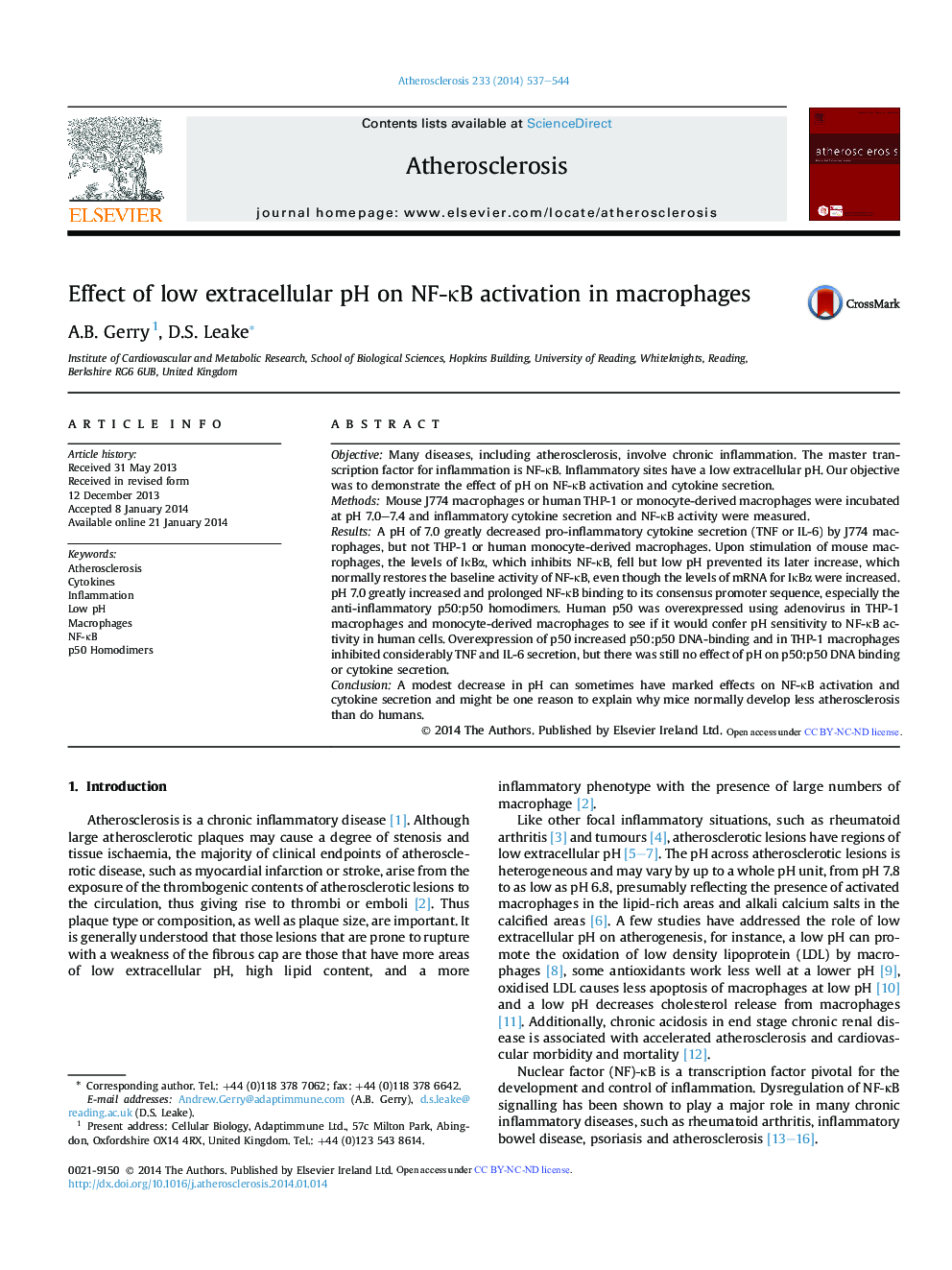| Article ID | Journal | Published Year | Pages | File Type |
|---|---|---|---|---|
| 5945780 | Atherosclerosis | 2014 | 8 Pages |
â¢Low extracellular pH decreased cytokine secretion by mouse macrophages.â¢IκBα, which inhibits NF-κB, fell but low pH prevented its later increase.â¢Low pH prolonged anti-inflammatory p50:p50 homodimer binding to an NF-κB promoter.â¢Overexpression of p50 increased p50:p50 DNA-binding and inhibited TNF secretion.â¢A modest decrease in pH can have marked effects on NF-κB activation.
ObjectiveMany diseases, including atherosclerosis, involve chronic inflammation. The master transcription factor for inflammation is NF-κB. Inflammatory sites have a low extracellular pH. Our objective was to demonstrate the effect of pH on NF-κB activation and cytokine secretion.MethodsMouse J774 macrophages or human THP-1 or monocyte-derived macrophages were incubated at pH 7.0-7.4 and inflammatory cytokine secretion and NF-κB activity were measured.ResultsA pH of 7.0 greatly decreased pro-inflammatory cytokine secretion (TNF or IL-6) by J774 macrophages, but not THP-1 or human monocyte-derived macrophages. Upon stimulation of mouse macrophages, the levels of IκBα, which inhibits NF-κB, fell but low pH prevented its later increase, which normally restores the baseline activity of NF-κB, even though the levels of mRNA for IκBα were increased. pH 7.0 greatly increased and prolonged NF-κB binding to its consensus promoter sequence, especially the anti-inflammatory p50:p50 homodimers. Human p50 was overexpressed using adenovirus in THP-1 macrophages and monocyte-derived macrophages to see if it would confer pH sensitivity to NF-κB activity in human cells. Overexpression of p50 increased p50:p50 DNA-binding and in THP-1 macrophages inhibited considerably TNF and IL-6 secretion, but there was still no effect of pH on p50:p50 DNA binding or cytokine secretion.ConclusionA modest decrease in pH can sometimes have marked effects on NF-κB activation and cytokine secretion and might be one reason to explain why mice normally develop less atherosclerosis than do humans.
